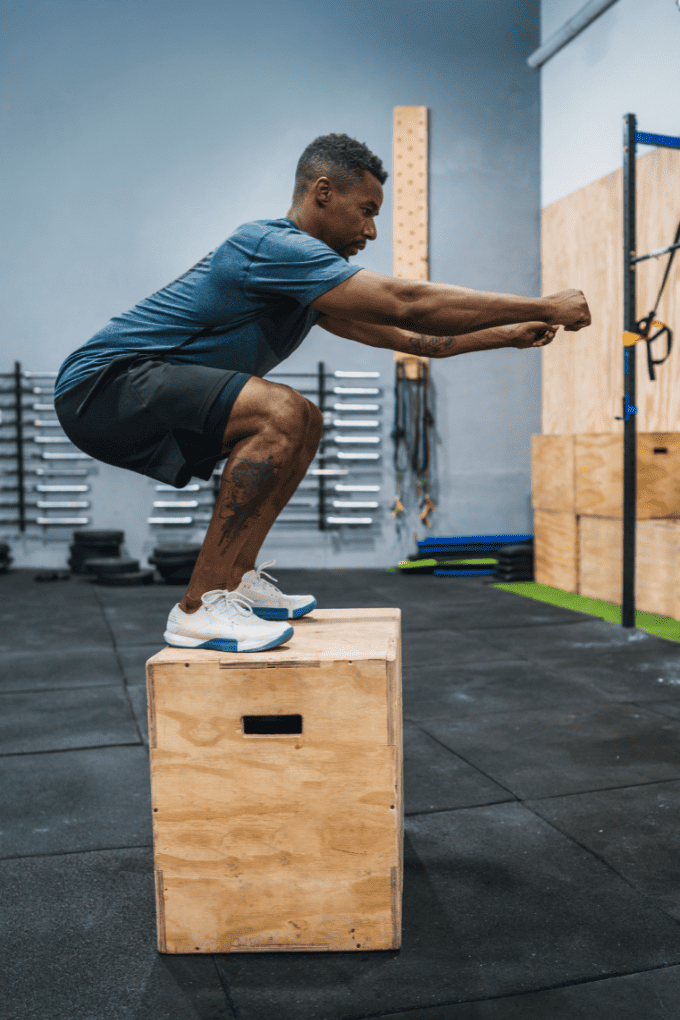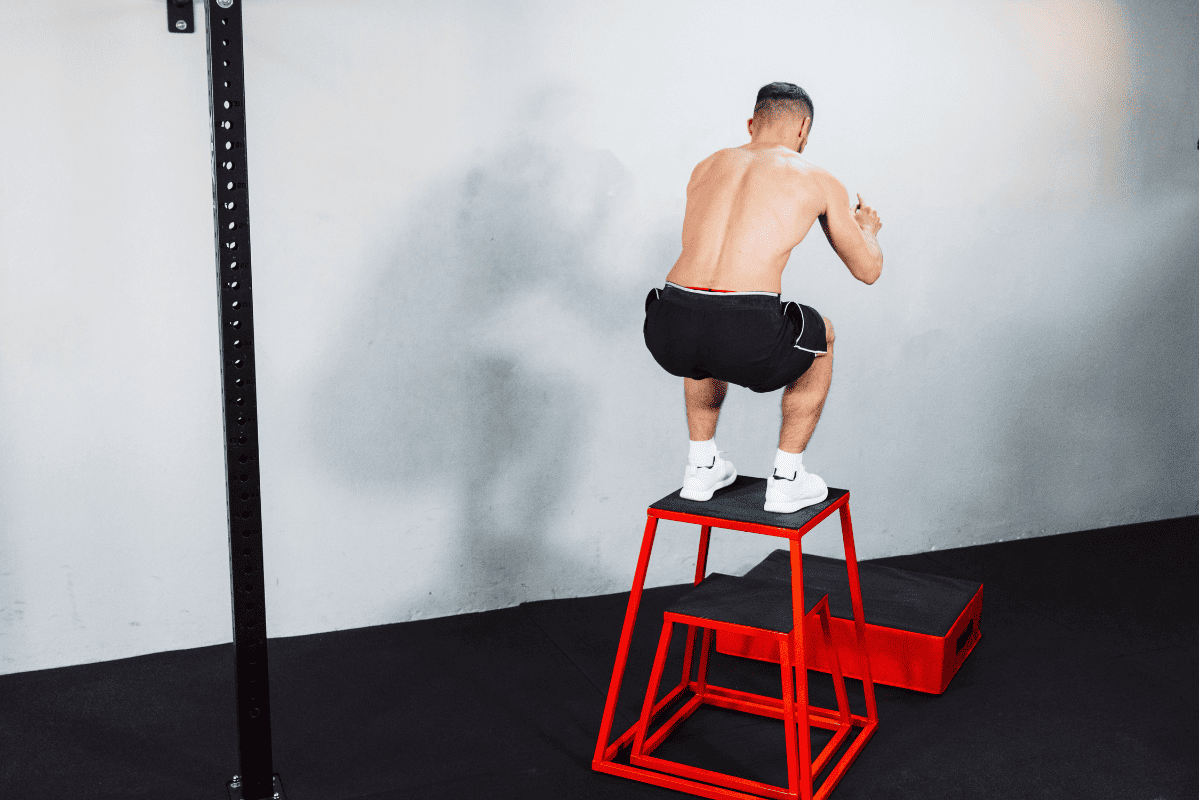Ready to Dominate? Try These Football Plyometric Exercises!
Ready to take your game to the next level?
Plyometric training is your secret weapon to dominating the field, improving your power, speed, and agility, which – let me tell you – can be a game-changer in football.
Grab your cleats and let’s dive right into the world of plyometrics!
Understanding Plyometrics
What Are Plyometrics, Anyway?
Back when I was an intern at the University of Tennessee, I was introduced to proper plyometric training, including exercises and progressions, and it transformed my outlook on power development.
Plyometrics are exercises that involve rapid contraction and extension of muscles, helping you to improve your muscle power and strength over time.
These exercises are all about that explosive energy that gets the crowd on their feet during a game!
The Science Behind the Beast
But hey, it’s not just about raw power – there’s solid science behind this.
Plyometrics leverages the stretch-shortening cycle, a quick transition from a muscle stretch to a contraction. This is what gives that explosive power during jumps and sprints.
Benefits of Football Plyometric Training

Power and Muscle Strength
Imagine being the player who can sprint faster, jump higher, and show unprecedented strength on the field.
Plyometric exercises help enhance muscle strength, giving you that edge over your opponents. And yes, I have seen players evolve from walk-on to an All-Conference standout.
Improved Agility and Speed
Quick footwork and the agility to change directions swiftly can often be the decisive factor in crucial game moments.
Plyometric training aids in enhancing your agility, allowing players to both decelerate quicker (absorbing force) and drive more explosively out of cuts (generating force).
Building a Fortress: Injury Prevention
We’ve all had those moments – a slip here, a fall there, and bam, you’re on the bench or training room for the rest of the season.
Plyometric exercises, as part of a complete strength training program for football, can be part of your shield here, strengthening your muscle groups and reducing the risk of injuries.
Getting Started with Football Plyometric Exercises
Warm-Up: The Unsung Hero
Before you start utilizing these powerful exercises, you’ve got to warm up properly.
I cannot stress this enough – plyometric exercises are extremely physically demanding and trying to jump right into training (no pun intended) can be a recipe for disaster.
Start with a dynamic warm-up that gets the heart rate up, takes the body through full ranges of motion and wakes up the central nervous system. You can even include low-level plyos, like Jump Rope, in a dynamic warm-up to prepare for higher-intensity jumps.
Safety First
This may seem obvious, but this is important so I’ll mention it anyway – always ensure you’re training with the right footwear and on the right surface to prevent injuries.
Also, technique is king here, so make sure to take the time to learn the proper form on each and every drill.
Best Plyometric Exercises for Football Players
Box Jumps

Ah, the good old Box Jumps – a classic!
Let’s talk about how it’s done.
Start with a stable platform and jump onto it with both feet, landing softly to protect those knees.
And you don’t need to jump onto the tallest box you can find. Grab a box that you can comfortably jump on, explode up and land in a quarter-squat position.
Variations
Once you get the hang of it, challenge yourself with single-leg Box Jumps or increase the height with depth jumps.
These are both more advanced movements, though, make sure you start your progression with more basic plyometrics first.
Broad Jumps
Broad Jumps are all about that explosive forward power.
Stand with your feet shoulder-width apart, swing your arms, and jump forward as far as you can. Land softly to minimize the impact on your joints.
Progression
Track the distance on each jump and try increasing the distance gradually each set. I typically like to do Broad Jumps in sets of 3 and challenge players to cover 10 yards.
If you have a partner you can progress to Broad Jumps with a resistance band around the waist.
Power Skips
Meet the Power Skips, a fantastic drill to improve your explosive power. Begin with a high knee action and then add a powerful upward leap, really reaching for the sky with each skip.
Techniques
The key is to focus on the height rather than the distance, really pulling in that core and driving with your arms.
Power Skips is a great plyometric drill that can serve as a foundation for the next plyo on the list.
Alternate Leg Bounds
Now, this is one of my personal favorites.
Begin by slowly running (we call them build-ups) and then exaggerate the running motion, bounding from one leg to the other. It’s a killer for enhancing coordination and stride length.
Don’t worry if it takes you a little longer to master Alternate Leg Bounding. I’ve seen plenty of guys struggle to pick up the rhythm and technique of this drill.
Variations
As you get better, incorporate speed drills and sprints directly into your bounding.
Plyometric Push-Ups

Bring in the upper-body plyometrics with Plyometric Push-Ups.
Start in the classic push-up position and lower yourself down, then explode up, lifting your hands off the ground (clapping the hands once they’re off the ground is common).
Modifications
Beginners can start with a simple variation and gradually build strength.
Integrating Plyometrics into Your Training Routine
Building a weekly schedule that integrates plyometric training with your weight training and other conditioning workouts can do wonders.
It creates a balanced approach, and I’ve seen young athletes skyrocket their performance with a well-rounded routine.
I recommend adding a plyometric session once or twice a week, depending on the time of year. Just make sure to not overdo it when first starting out and slowly increase in reps and progress to more advanced drills.
Monitoring Your Progress
Hey, progress is a gradual climb, not a sprint.
Keeping a training log can be a great motivator and critical for keeping track of your progress. Knowing how many jumps you did the week before is extremely useful when planning out your workouts for the upcoming week so you don’t increase too much too fast.
If you start to feel the onset of inflammation – shin splints, knee tendonitis, etc – cut back or eliminate plyometrics until you feel you’ve properly recovered.
Football Plyometrics FAQ
What makes plyometric exercises a must-have in my football training program?
Incorporating football plyometric exercises into your training regimen can significantly enhance your explosive power, agility, and speed, all critical elements in football.
The speed of muscle contraction in plyometric exercises is something that is impossible to duplicate through any exercise you can potentially do in the weight room.
These exercises are designed to help you leverage your muscle strength to its full potential, making you a more explosive player on the field.
Can beginners benefit from football plyometric exercises?
Absolutely!
Some would argue that you need a certain baseline of strength before you begin including plyometrics into your program. However, anyone who has watched kids run, skip and jump on a playground knows that they’re already doing “plyometrics”!
Beginners should start with simpler exercises and gradually progress to more advanced drills.
Combine this with monitoring your volume of plyos so you don’t end up overtraining.
Final Thoughts
Alright champs, you’ve just received your complete crash course in utilizing plyometrics within your football training program.
Remember, every pro was once a beginner, so start with the basics and steadily advance to the complex drills.
I can’t wait to see you all dominating the field with your newfound strength and agility.
Let’s get out there and crush it!

